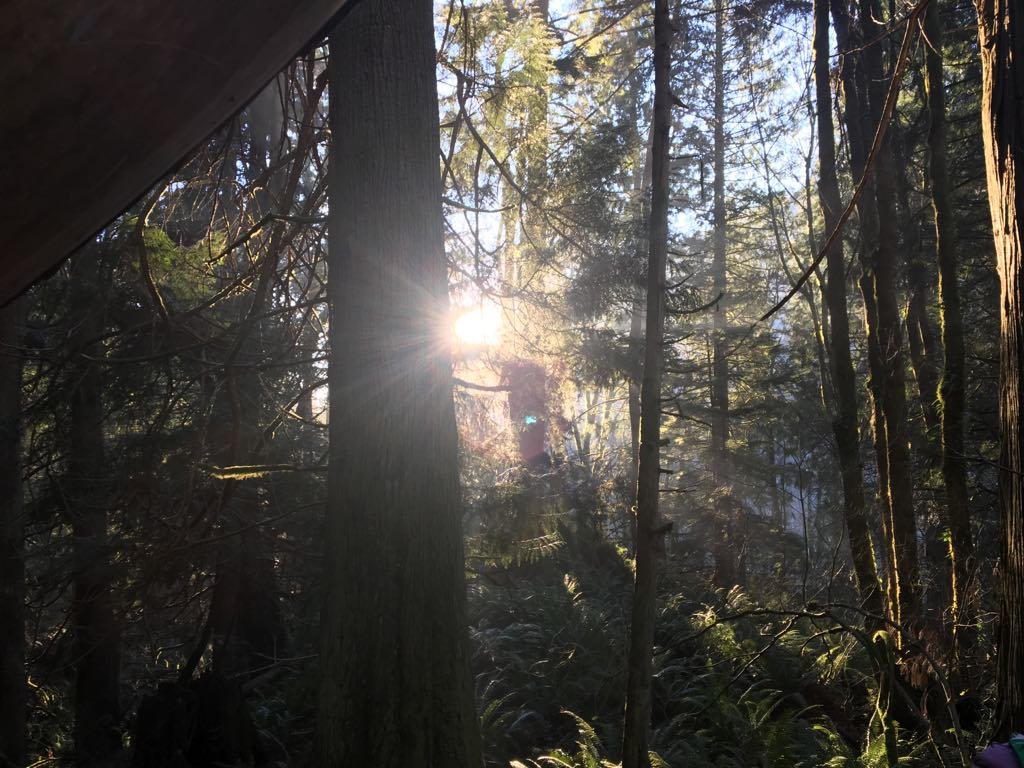Ode to Tiger Mountain
Shared by Nastassia Barber
Some might say Tiger Mountain is more of a hill. Its name is confusing because, in addition to being literally tigerless, it really doesn’t merit such a fierce name at all with its hospitable, forested slopes that reach a maximum elevation of about 3000 feet. It seemingly was given the name because Cougar Mountain had already been named, and they wanted to keep with the theme (though there really are cougars there, so the reasoning is a bit lost on me). Even better is the name given to the region, the Issaquah Alps, which the Issaquah Alps Trail Club calls “the outrageous name for the foothills surrounding Issaquah… which none of us could say with a straight face at that time.” This joke has stuck and the name is widely used, even in serious contexts.
Tiger may not be a “real” mountain, but it is a real forest, and it is a stunner. It’s that damp, mossy, fern-filled forest that really defines Washington, where light plays on the fern leaves between dewy evergreen branches. Occasionally, the trail breaks out into a comparatively clear area where you can appreciate the impressive size of some of the older trees. Anyone willing to drive about 30 minutes from Seattle can pay tribute to the strikingly emerald-colored pillows of moss along its trails. For me, it’s become a regular companion for weekly group runs and hikes with friends and family, a place where every trail is associated with an abundance of memories. Its proximity to attentive trail maintainers is evident from the WTA description of the trail, which includes very loving descriptions of several whimsical, named landmarks. The Issaquah Alps were named by Harvey Manning, the founder of IATC who, along with Bill Longwell, was a major proponent of a trail on Tiger mountain in the 70s.
The trail club was incredibly devoted to have made such an extensive trail network despite opposition from Weyerhaeuser. Originally, the company was concerned that it would be bad for public opinion to make it more visible that a logging company was, in fact, cutting down trees. By some strange coincidence, Manning’s former scoutmaster was a bigshot in the company, and he came to believe that a trail could educate the public and form a positive opinion of the planting and cutting cycle of the logging business. In the end, this was not true and eventually the company gave up the land, which is now controlled by the DNR. On my many visits there, I have seen stumps, discarded tree bits, and young clusters of trees all scattered among the old forest. The logging process is still very visible. There is something fitting about Seattle residents recreating among the remnants of a Weyerhaeuser operation, as it can be argued that the modern logging methods brought by his company created the financial foundation for our city’s growth in the 1800s and early 1900s.
With the growth, of course, logging brought a large ecological dilemma and many workplace deaths. On Tiger Mountain, the “Artifact Trail'' takes you to the site of a 1925 train wreck. The brakes failed on a train carrying lumber and other supplies, and while some escaped, the engineer was pinned under the train and was killed. Much of the wreckage is still there and very visible. An astute visitor (which I was not) can apparently find a bathtub and other remnants of a logging camp that had burned down two years before in the same area.
Industry is still alive on Tiger. Now, there are transmitting antennas for many Seattle radio stations, including KISW, which coincidentally was at some point managed by the same Harvey Manning. And the trails are some of the most popular in Washington. For such a small area, it’s amazing how much of a culture has developed around it: there’s the inexplicable “Hiker’s Hut,” the well-known training “trail” (river of mud) many take up the Cable Line, and the decorated Christmas trees year-round. Visible from afar are the paragliders off Poo Poo Point (named for the sound of train whistles– I may never hear train whistles exactly the same again).
The Tiger Mountain trails set a great example of a community park, with a human-feeling history that creates something like a mythology due to its forgotten-inside-joke names and abandoned man-made objects. A lot of love and community went into building these trails– an attitude, I’m sure, that has informed initiatives to protect other forests as well. And for my part, I can get distracted by dramatic alpine landscapes and forget how much I love being in the woods. That is, until I spend a minute looking closely at the trails here.



